F5 301a BIG-IP LTM Specialist: Architect Set-Up & Deploy Exam Practice Test
BIG-IP LTM Specialist: Architect Set-Up & Deploy Questions and Answers
The network team has recently added a new syslog server with IP address 10.1.1.1.
Which command adds the new syslog entry on the F5 LTM device?
A)

B)

C)
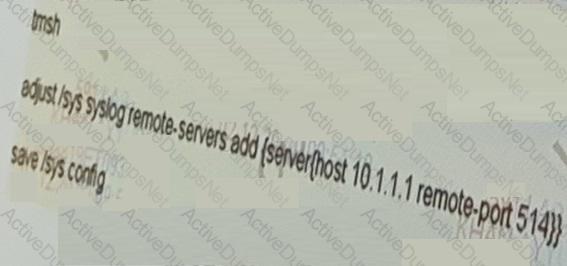
D)
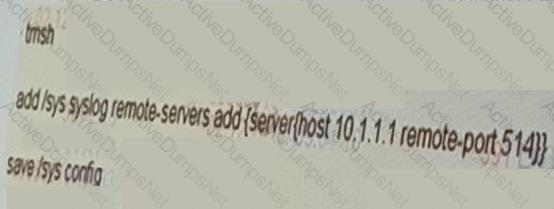
Four members in a server pool have similar hardware platforms. An LTM Specialist needs the load balancing method that can select the server with the fewest entries in the persistence table.
Which load balancing method should the LTM Specialist use?
An LTM Specialist configures a new HTTPS virtual server that contains a valid example.com ssl certificate. The LTM Special receives an error in the browser when connecting.
What must be added to the SSL Client profile to fix this issue?
set payload {CACHE :: payload}
}
Which two profiles should be used on the virtual server? (Choose two.)
A virtual server with SNAT automap enabled selects pool member 10.20.0.10.443 for the server-side flow. The client side flow source IP is 192.168.0.10 .

Which source IP should be expected in the server-side connection?
Refer to the exhibit.
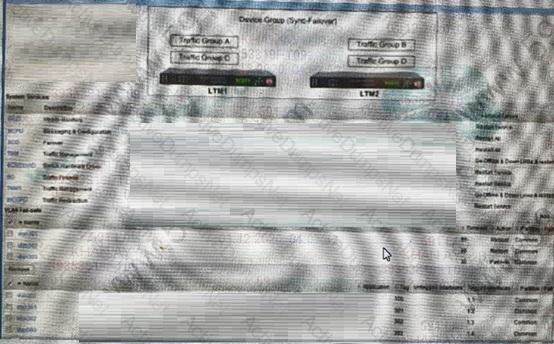
The LTM devices LTM3 and LTM2 have four Traffic Groups defined with approximately the sar of failover objects defined in each group.
- Traffic Groups A and C have Default Device set to LTM1
- Traffic Groups Band D have Default Device set to LTM2.
- Traffic Groups B and C do NOT have Auto Failback enabled. Traffic Groups A and D have Auto Failback enabled with a timeout value of 60 seconds.
- Traffic Groups A and D have Auto Fallback enabled with a timeout value of 60 seconds.
Both LTM devices are healthy and able to pass traffic for any Traffic Group.
LTM1 loses connectivity on interface 1.4. The LTM Specialists notified 60 seconds after the interface goes down.
What is the state of the Traffic Groups on each LTM device?
An LTM specialist needs to create a new account with the admin role called "newadmin' and access to all partitions.
Which tmsh command should be executed?
A new iRule needs to be tested. The LTM Specialist needs to measure page load times and monitor potential changes in memory usage A load test is scheduled.
Which two features should the LTM Specialist use to monitor these requirements? (Choose two.)
An LTM device needs an additional traffic group.
Which configuration item is required?
An application is being load balanced through the LTM device using the configuration displayed below.
The network has been re-engineered to NAT all client connection. As a result, all client connections are hitting the same pool member.
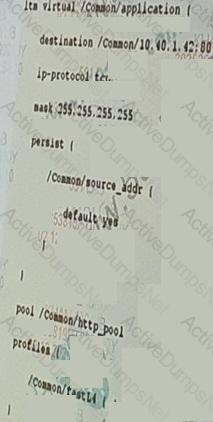
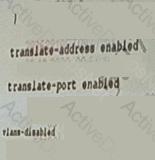
Which changes should the LTM Specialist make in order to restore load balancing functionality wile maintaining session persistence?
An LTM Specialist needs to assign a health monitor to a pool with two pool members 10.10.10 101 and 10.10.10.102 Both pool members are listening on port 8080 with TCP. The health of the application depends on the health of an another server (10 10 10 100) that runs port 9080 with TCP.
Which two custom TCP monitors should be selected as the pool's health monitors' (Choose two)
Refer to the exhibit.
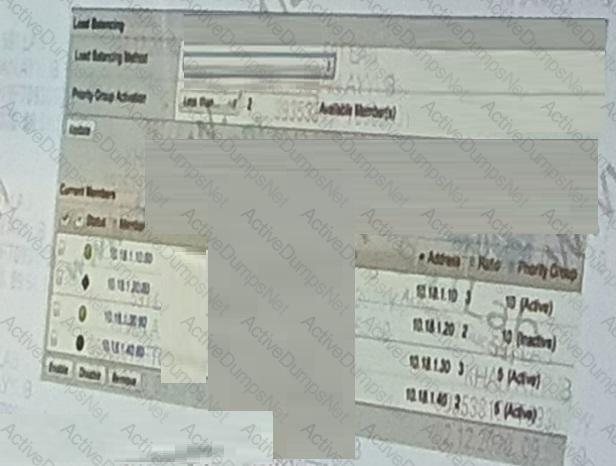
The pool shown is configured with four pool members in a variety of states. The application is receiving a large number of request. The LTM Specialist needs to make changes to make sure that all members receive the same levels of traffic.
Which changes need to be made?
An LTM Specialist reports that an application si no longer reachable after it has been upgraded.
Nothing has been changed in the configuration on the LTM device.
The logs indicates that health monitors to all servers have failed as shown:
What should the LTM Specialist verify next?
TWO LTM devices are in the same Device Group and configured for Ac live/Standby Failover. The LTM Specialist observes that the HA Active and Standby device constantly changes state. All network links use the default route domain A dedicated fiber ink is used for the HA connection with a latency of 250 ms but no packet loss.
What is causing the change in failover state to occur?
An LTM Specialist has noticed in the audit log that there are numerous attempts to log into the Admin account. Theses attempts are sourced from a suspicious IP address range to the Configuration Utility of the LTM device.
How should the LTM Specialist block these attempts?
An LTM Specialist needs to create a virtual server to pass TCP traffic to three pool members.
Which two virtual server types should be used to meet the requirements? (Choose two)
An HTTP monitor is created and assigned to a pool with the following non-default configuration:
Interval: 7 seconds
Timeout: 22 seconds
Reverse: Yes
Send String: GET/status.html HTTP/1.1/r/nHost:test.example.com/r/nConnector:Close Receive String: Up
The HTTP server sends the following response:
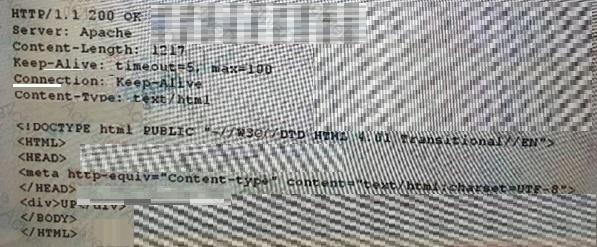
What is the resulting pool status?
An LTM Specialist needs to gather website statistics such as latency and throughput on the existing virtual server. This virtual server load Balances the backend web servers.
Which F5 feature will provide this?
To improve application security, an LTM Specialist must configure a BIG application access. The BIG IP system to authenticate the client certificate before permitting application access. The BIG-IP system must also support the ability to red to redirect users to a certificate enrolment system without generating a browser error.
Within the Client SSL profile, which value should the LTM Specialist select for the Client Certificate option?
An LTM Specialist discovers an issue with the custom http monitor that returns in a false positive status.
The end users cannot get the right website, but the http monitor marks the pool member UP.
What is causing the false positive result?
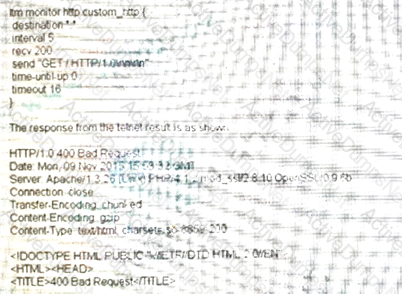
An TLM Specialist needs to configure a virtual server to terminate SSL connection on the LTM device.
Cryptographic information must be re-authorized for SSL sessions that remain open for longer than 30 seconds.
Which settings should the LTM Specialist configure in the client SSL profile?
An TLM Specialist has an Exchange that must use the LTM device to route traffic to the internet.
Which SNAT/NAT configure allows the Exchange server’s traffic access the internet through the LTM device?
